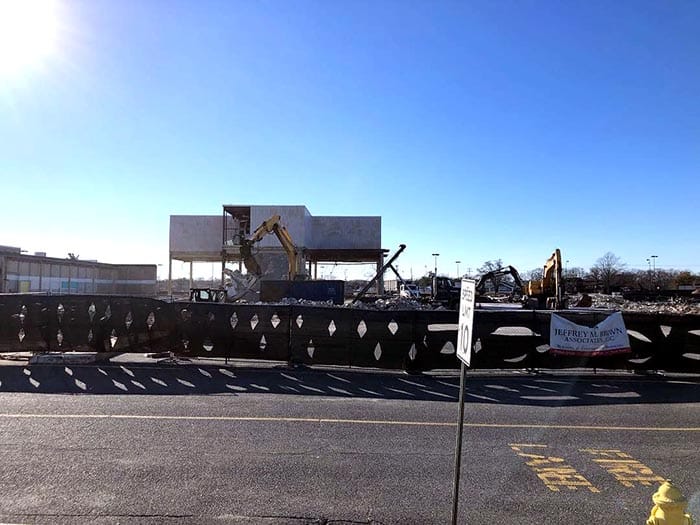
TOMS RIVER – There is a national trend where large stores close and are replaced by smaller shops and businesses focused on service, and it might happen in Toms River, too.
When big chains go under, small towns feel the pinch. Recently, Toys R Us, Kmart and Sears have closed their Toms River locations (Kmart purchased Sears in 2005).
Township planner David Roberts said that he had not received anything to indicate any plans for the Toys R Us or Kmart properties.

The Ocean County Mall had plans approved in October of 2018 to knock down Sears and replace it with a “lifestyle center,” comprised of three buildings totaling 97,679 feet of retail space that would be built on the eastern side of the property fronting Oak Avenue. It would make it a destination site – a retailing trend that combines a shopping center or mixed-use commercial development with leisure amenities – designed to entice shoppers from other communities. At that October meeting, an attorney for the development estimated that the project could be completed in about 18 months.
The former Sears property is moving along, in that the building was demolished. The Ocean County Mall may not yet have Resolution Compliance, Roberts said.
Resolution Compliance is, in general terms, a checklist of items that a builder submits to a town before they are approved to begin building.
Roberts suggested that the mall might be waiting on approval from state agencies.
At a recent Township Council meeting, the liquor license that used to belong to the Surf Club in Ortley Beach was transferred to a BJ’s Brewhouse being built on the mall property.

It should come as no surprise that these big chains felt pressure with online sales, particularly Amazon.
The township’s business administrator, Don Guardian, had said any business that replaces a big center like Kmart will have to be something that you can’t get online. This is why gyms, yoga studios, offices and medical uses are more likely to move into empty properties.
“I think it is difficult for any business that competes against Amazon to survive at this point, regardless of size,” said Alizar Zorojew, executive director of the Downtown Toms River Business Improvement District. Although these shops are outside the downtown’s service area – Kmart barely so – he offered insight on what challenges local businesses are facing and what they can do to succeed.
“The answer is in experiential retail and developing the ‘omnichannel’ for retail brands,” he explained.
“Experiential” is broadly defined as anything you can’t do online, like restaurants, he said, or destinations like the hatchet throwing locations, a few of which have already opened up locally.
“Omnichannel” is about bringing in sales from every avenue, not just people stopping in, he said. That way, there are ways to make money through online purchases, apps, or more.
“When you consider the omnichannel as your approach, the brick and mortar store takes on a new meaning and purpose. Your physical space becomes not just a location for sales and to showcase your products, but a place where you express an identity, provide an experience (that hopefully finds its way onto your customer’s Instagram/Snapchat/Facebook/etc…), and cultivates brand loyalty,” he said. “Retail is not dead, it is just changing.”

The International Council on Shopping Centers educates retailers on trends. They said the omnichannel business is a smart move in today’s economy.
“We’re seeing that people shop both brick and mortar and online and that brands with omnichannel strategies see success,” said Stephanie Cegielski, vice president of public relations at ICSC. “Consumers want convenience and to shop on their own terms. Retailers that are responding by creating a seamless shopping experience through both digital and physical, meeting shoppers when and where they are at any given time – whether that’s in-store or online – stand to benefit.”
There’s no simple rule to say what municipal officials can do to entice businesses to town, or to fill up a vacant storefront, she said. It varies from town to town. What businesses look at is community size, tax rate, and available space.







